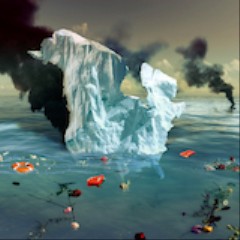Nuugaatsiaq after the tsunami. Photo courtesy of Awewewe/Wikimedia
In August, Greenland’s ice sheet passed a critical point of no return; Ohio State University researchers determined snowfall that replenishes the ice will no longer be able to keep up with the volume it’s losing. In September, a section of ice measuring nearly 110 square kilometres broke from the Arctic’s largest remaining ice shelf in northeast Greenland, due to warming waters. In a December report from the University of Liege, new climate models are predicting a 60 percent greater melting of Greenland’s ice sheet than had previously been forecast.Researchers who’ve studied the 2017 mega-tsunami say that while events like it are still uncommon, the effects of global warming will result in more landslides and a drastic rise in sea levels, both in Greenland and elsewhere, particularly in already thawing Arctic and alpine environments. Those living directly in their path, however, are already experiencing the trauma, both individually and communally. “We are people of the ice,” said Marna Møller on a day in March, as her husband Mikkel brought over mugs of coffee. “In our fjord we have a massive glacier front, so we are used to ice calving in our fjord. But what happened then was something entirely different; these waves were of a massive scale.”“It’s terrible. We never even imagined having to leave Nuugaatsiaq before.”
Marna and Mikkel Møller in Uummannaq in March 2020. Photo by Jessie Brinkman Evans
A painting of Nuugaatsiaq in the Møller family's new living room, a reminder of the home they've lost. Photo by Jessie Brinkman Evans
Dr. Annie Kerouedan sits at her kitchen table in Uummannaq, a day after leaving her position at the hospital. Photo by Jessie Brinkman Evans
New houses built for the tsunami victims, located at the edge of Uummannaq. Photo by Jessie Brinkman Evans
The Møller family outside their new home, nearly three years after the Nuugaatsiaq tsunami forced their evacuation to Uummannaq. Photo by Jessie Brinkman Evans
